
views
X
Expert Source
Adrienne Youdim, MDBoard Certified Internist
Expert Interview. 11 September 2020.
As you age, your nitric oxide levels are depleted and should be supplemented. You can boost your nitric oxide levels by doing regular cardiovascular exercise, getting outdoors, and meditating. These levels can also be raised if you eat healthy foods like greens and protein. Many supplements are available to boost you nitric oxide levels, but they should only be taken with your doctor's approval.
Getting Active

Do at least 30 minutes of cardio every day. Cardiovascular exercise makes your heart pump faster, which triggers the production of nitric oxide in your body. Try to do sessions of moderate to intense cardio that last at least 30 minutes, or break up the 30 minutes into activities that are at least 10 minutes long. Plan activities such as running, biking, swimming, dancing, rollerblading, or aerobics. Brisk walks are also a good form of exercise, and can easily be combined with daily activities like walking your dog or running errands. Fit workouts into your busy schedule by waking up early to exercise or exercising during your lunch break.

Spend at least 20 minutes outdoors each day. Getting UV exposure allows your body to unlock its own stores of nitric oxide, raising your overall levels. Take the time to sit or walk around outdoors at least 20 minutes a day. This will also help reduce your blood pressure and improve your mood. Apply SPF to protect your skin from UVA damage.

Meditate to help open up your blood vessels. Meditation aims to relax the body, which can lower your blood pressure. This relaxed state can improve your body's production of nitric oxide. Aim to practice meditation at least once or twice a week to promote a healthier body and mind.
Consuming the Right Nutrients
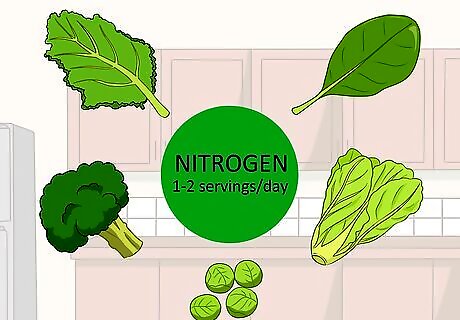
Eat leafy greens and other vegetables that contain nitrogen. As a general rule, dark green vegetables are rich in nitrogen, an element that which produces nitric oxide when metabolized in the body. Aim to eat at least 1-2 servings of these foods a day to keep up your nitric oxide levels. These vegetables include: Kale Spinach Lettuce Brussel sprouts Broccoli
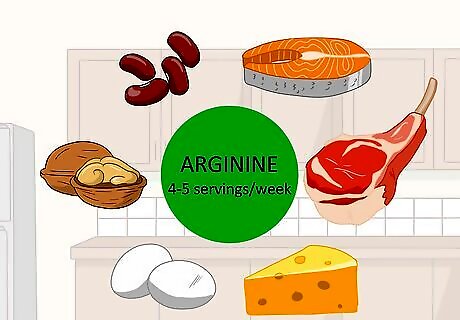
Eat protein-rich foods high in arginine. Nitric oxide is produced when the body breaks down arginine. This amino acid is found in most high-protein foods. Try to eat 4-5 servings per week of foods like: Fish (e.g. salmon, swordfish) Meats (e.g. lamb, beef) Cheese Eggs Nuts Legumes Beans
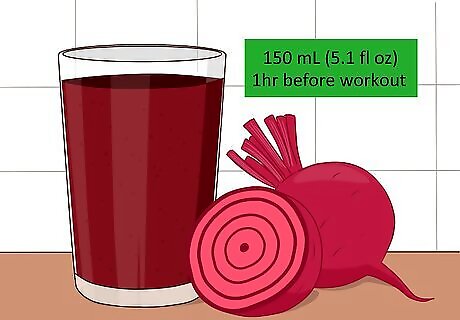
Drink beet juice for an increase in nitric oxide. Beet juice can increase your levels of nitric oxide significantly before a workout. Drink at least 150 millilitres (5.1 fl oz) of it an hour before working out, or regularly during the week to raise your levels consistently. To mix things up, add beet juice to smoothies or mix it with other juices for a variety of flavors. Berries have the sweetness and tartness to hide the taste of beets when mixed with them.
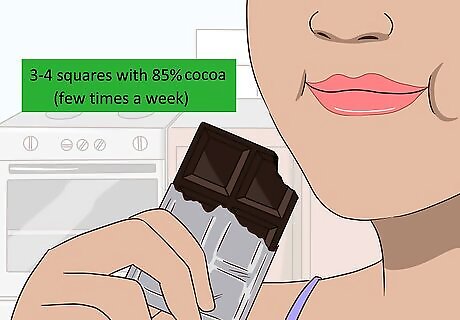
Eat dark chocolate to ease your body's production of nitric oxide. Dark chocolate contains polyphenols, which can help to ease your oxidative stress. In turn, it can promote the body's production of nitric oxide. A few times a week, eat 3-4 squares of chocolate containing at least 85% cocoa. This should amount to 40 grams (1.4 oz) of chocolate. Swap milk chocolate or candy for dark chocolate as a snack or small dessert.
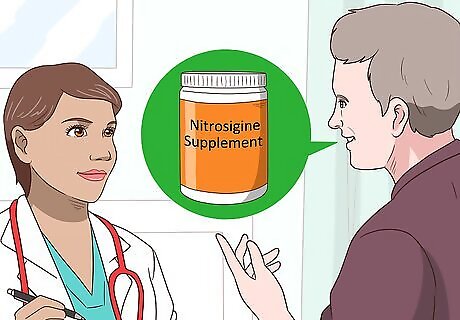
Ask your doctor about nitrosigine supplements. Nitrosigine supplements are used by some body builders to increase their nitric oxide levels and boost their energy during hard workouts. The increased blood flow created by nitric oxide helps with muscle growth and recovery. Ask your doctor if nitrosigine supplements would be a viable choice for you. Do not take nitrosigine without first discussing the potential risks with your doctor.




















Comments
0 comment